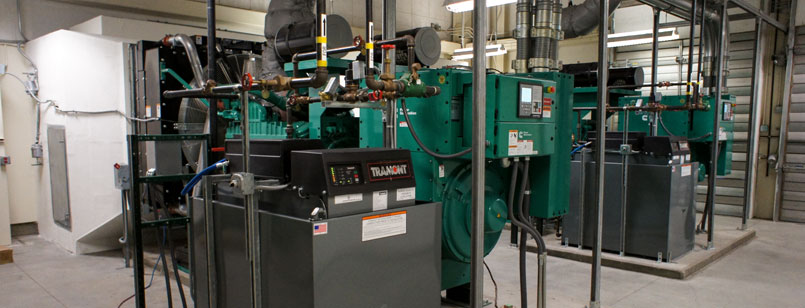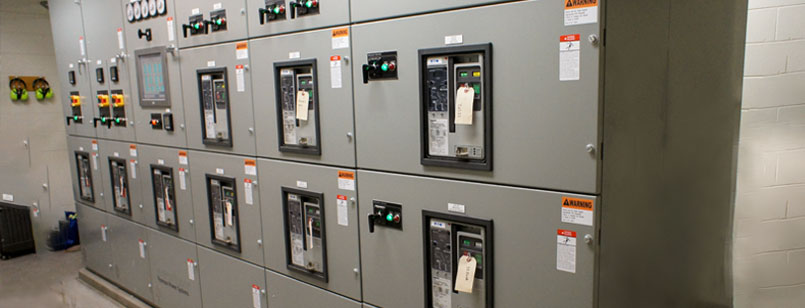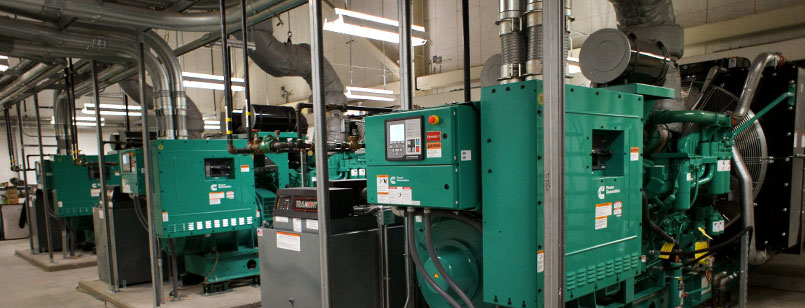About this project
Challenge
Solution
Kroeschell was selected to perform the design/build project that included removing and replacing:
- The three (3) existing diesel driven 1,000kW generators with three (3) new diesel driven 1,000kW, 277/480V, 3 phase, 4 wire, 0.8 PF diesel generator sets.
- The existing paralleling/emergency distribution switchgear with a new switchgear.
- Four (4) existing ATS in the Central Energy Plant (CEP) and the ten (10) ATS in the main hospital with all new switches.
In all cases, temporary equipment and cables, that would provide emergency power to the facility in the event of a normal power failure, needed to be installed first before removing the existing equipment. Kroeschell worked closely with the hospital personnel to schedule shutdowns that would not interrupt operations. The onsite team utilized three (3) temporary generators in two (2) temporary trailer mounted units, as well as a temporary distribution switchboard and cabling.
After installing and transferring to temporary power, Kroeschell was able to remove the existing equipment and replace it with the permanent emergency power system. The modernized components were brought online and then interfaced with the current Building Automation System (BAS).




